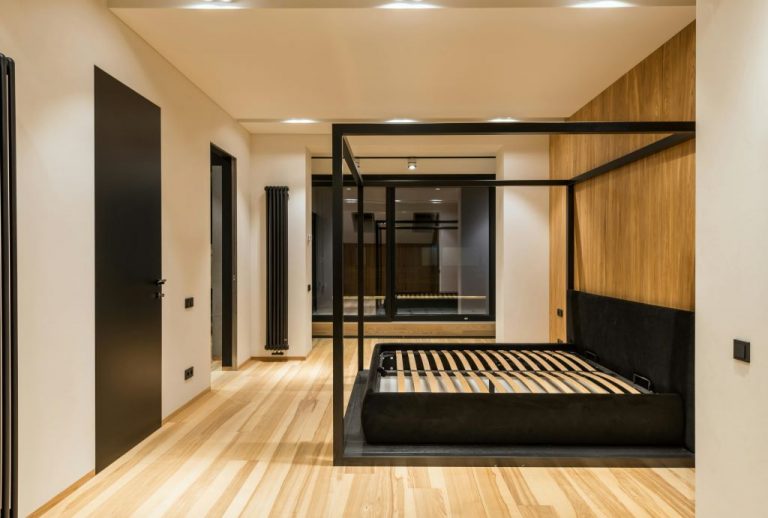Your home is a reflection of your personality and lifestyle, and its interior design plays a crucial role in creating a space that is both functional and aesthetically pleasing. While many homeowners have a vision for their ideal living space, bringing that vision to life can be a difficult task.
This is where home designers come in, offering their expertise to revamp interiors and turn houses into homes. In this comprehensive guide, we’ll explore the role of home designers in enhancing your living space, from conceptualization to execution, and the myriad benefits they bring to the table.
1. The Importance of Interior Design
Interior design plays a pivotal role in shaping our living spaces and enhancing functionality, aesthetics, and overall well-being. Its importance lies in creating environments that reflect our personalities and lifestyles effectively.
Creating Functional and Stylish Spaces
- Personalized Touch: Interior design allows homeowners to express their unique style preferences and create spaces tailored to their needs.
- Optimizing Layout: Designers maximize space utilization and flow, ensuring that each area serves its intended purpose while maintaining visual harmony.
Enhancing Quality of Life
- Comfort and Well-Being: Thoughtfully designed interiors contribute to a sense of comfort and well-being, promoting relaxation and enjoyment at home.
- Boosting Productivity: A well-designed workspace can enhance productivity and creativity, creating an environment conducive to work and study.

2. The Role of Home Designers in Interior Revamping
Home designers are instrumental in revitalizing interiors, utilizing their expertise to transform spaces into personalized havens. Their role extends beyond aesthetics, encompassing functionality, innovation, and client-centric solutions. If you are looking for the best home designer to enhance your living space, you can click buildlabs.com.
Initial Consultation and Assessment
- Understanding Client Needs: Designers conduct thorough consultations to understand clients’ lifestyles, preferences, and budgetary constraints.
- Assessment of Existing Space: Designers assess the existing layout, architecture, and condition of the space to identify areas for improvement.
Conceptualization and Planning
- Design Concept Development: Based on client input and space assessment, designers develop design concepts and mood boards to visualize the desired aesthetic.
- Space Planning: Designers create detailed floor plans and layouts to optimize space utilization and functionality, ensuring a cohesive design scheme.
3. Tailoring Interiors to Suit Your Lifestyle
Tailoring interiors to suit your lifestyle is essential for creating living spaces that align with your needs, preferences, and daily routines. Personalized design ensures functionality, comfort, and satisfaction in your home environment.
Customized Design Solutions
- Personalized Design Elements: Designers incorporate custom furniture, fixtures, and finishes to reflect clients’ tastes and preferences.
- Adaptable Spaces: Designers create flexible spaces that can adapt to changing needs and accommodate various activities and functions.
Integration of Technology and Smart Solutions
- Smart Home Features: Designers integrate technology such as smart lighting, automated blinds, and home automation systems to enhance convenience and efficiency.
- Multimedia Integration: Designers incorporate multimedia elements such as home theaters and sound systems for immersive entertainment experiences.

4. Material Selection and Finishes
Material selection and finishes are critical aspects of interior design, defining the character and quality of a space. From flooring to fixtures, every choice contributes to the overall aesthetic and functionality, creating a cohesive and visually appealing environment.
Quality and Durability
- Selection of High-Quality Materials: Designers source durable and sustainable materials that meet quality standards and withstand the test of time.
- Attention to Detail: Designers pay attention to finishes and details, ensuring a cohesive and polished look throughout the space.
Aesthetic Appeal
- Color Palette and Texture: Designers select colors, textures, and patterns that complement the overall design theme and create visual interest.
- Balance and Harmony: Designers strive for balance and harmony in material selection, creating a cohesive and visually appealing interior environment.
5. Execution and Project Management
Execution and project management are essential components of interior design, ensuring that the vision for a space is brought to life efficiently and effectively. From coordinating contractors to overseeing installations, meticulous planning is key to success.
Coordination and Collaboration
- Team Management: Designers coordinate with contractors, architects, and vendors to ensure smooth execution of the design plan.
- Timely Progress Monitoring: Designers oversee the project timeline and budget, promptly addressing any issues or delays to ensure timely completion.
Quality Assurance
- Attention to Detail: Designers conduct regular site visits to inspect workmanship and ensure that design specifications are being met.
- Client Feedback and Satisfaction: Designers solicit client feedback throughout the project and make adjustments as needed to ensure client satisfaction.

6. Benefits of Hiring a Home Designer
Hiring a home designer offers numerous benefits, from expert guidance and creative insight to streamlined project management and access to exclusive resources. Their expertise transforms visions into reality, creating personalized and professionally executed living spaces.
Expertise and Creativity
- Design Vision: Designers bring creativity and expertise, translating clients’ visions into tangible design solutions.
- Problem-Solving Skills: Designers anticipate challenges and offer innovative solutions to overcome design obstacles and constraints.
Time and Cost Savings
- Efficiency: Designers streamline the design process, saving clients time and effort in decision-making and project management.
- Resource Optimization: Designers leverage their industry connections and knowledge to source materials and services cost-effectively, maximizing value for clients.
Conclusion
In conclusion, home designers play a crucial role in enhancing your living space and transforming houses into homes. With their expertise, creativity, and attention to detail, designers bring your vision to life and create personalized interiors that reflect your lifestyle and preferences.
Whether you’re revamping a single room or undertaking a full-scale renovation, partnering with a home designer ensures a seamless and enjoyable design experience, resulting in a living space that is both functional and stylish.











